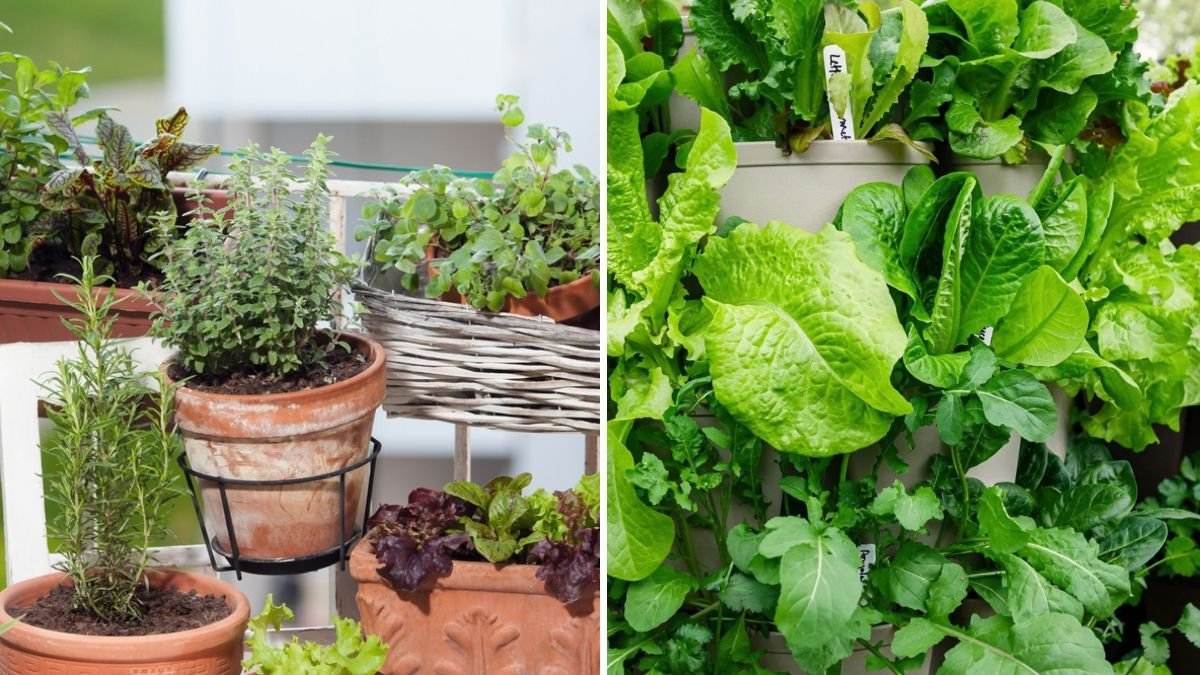Urban living often limits access to traditional gardening space, but balcony gardens offer an excellent solution. A well-planned balcony garden can not only beautify your home but also provide fresh vegetables, herbs, and even fruits to feed your family. With careful planning, the right containers, soil, and crops, a balcony garden can become a productive and sustainable food source. This guide provides a detailed approach on how to create a balcony garden that feeds your family, including planning, plant selection, container gardening, soil management, and maintenance tips.
1. Assess Your Balcony Space
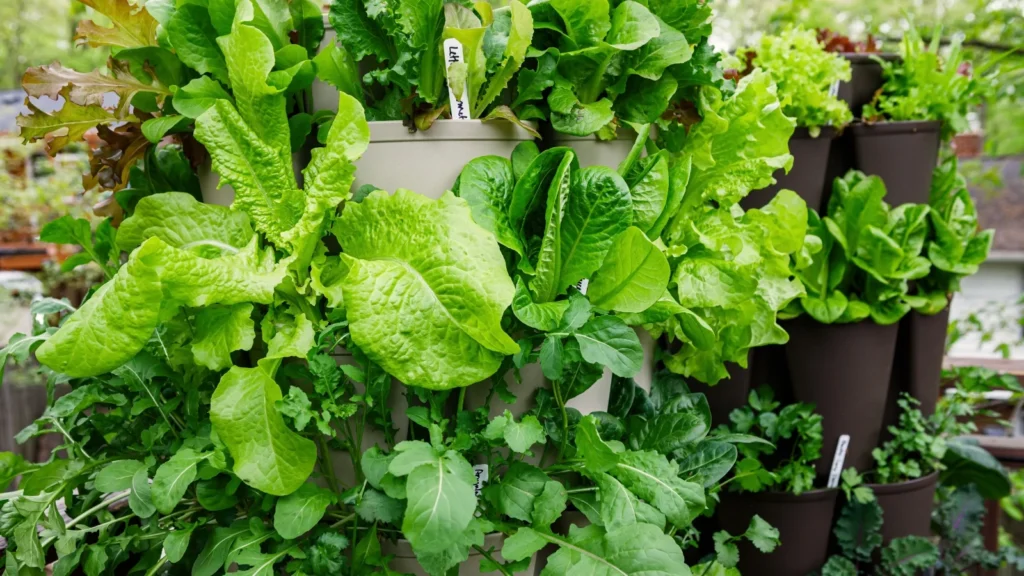
Before starting your garden, evaluate your balcony:
- Sunlight: Most vegetables and fruits require 6–8 hours of direct sunlight. Observe how sunlight moves across your balcony throughout the day.
- Weight Capacity: Ensure your balcony can safely support containers filled with soil, water, and plants. Consult building regulations if needed.
- Space Layout: Consider the width, height, and accessibility. Use vertical space with shelves, tiered containers, and hanging pots.
- Wind Exposure: Balconies can be windy. Install windbreaks like trellises or lattice panels to protect delicate plants.
Assessing these factors helps in selecting suitable crops, containers, and gardening techniques for your balcony.
2. Choose the Right Containers
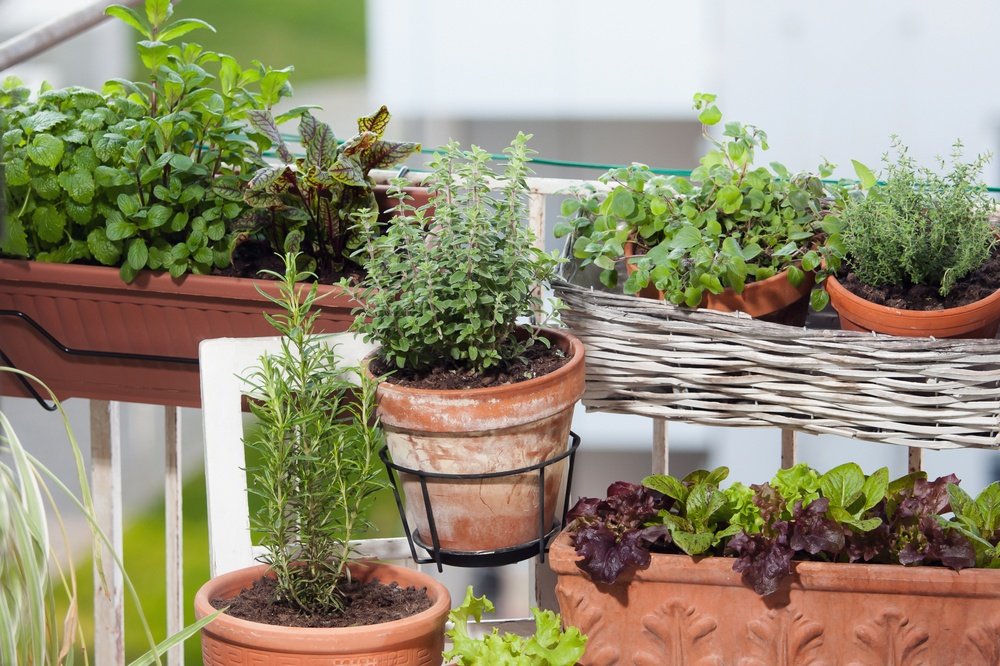
Containers are the foundation of a productive balcony garden:
- Size: Deep-rooted vegetables like tomatoes and peppers need 12–18 inches in depth, while leafy greens can thrive in 6–8 inch pots.
- Material:
- Plastic: Lightweight, retains moisture.
- Terracotta: Porous, helps prevent root rot but dries out faster.
- Fabric Grow Bags: Flexible, good drainage, ideal for tomatoes and potatoes.
- Drainage: Ensure drainage holes in every pot to prevent waterlogging.
- Space-Saving Options: Use tiered planters, wall-mounted pockets, and railing boxes for vertical gardening.
Selecting the right containers ensures healthy root growth and higher yields.
3. Selecting Plants for a Balcony Garden
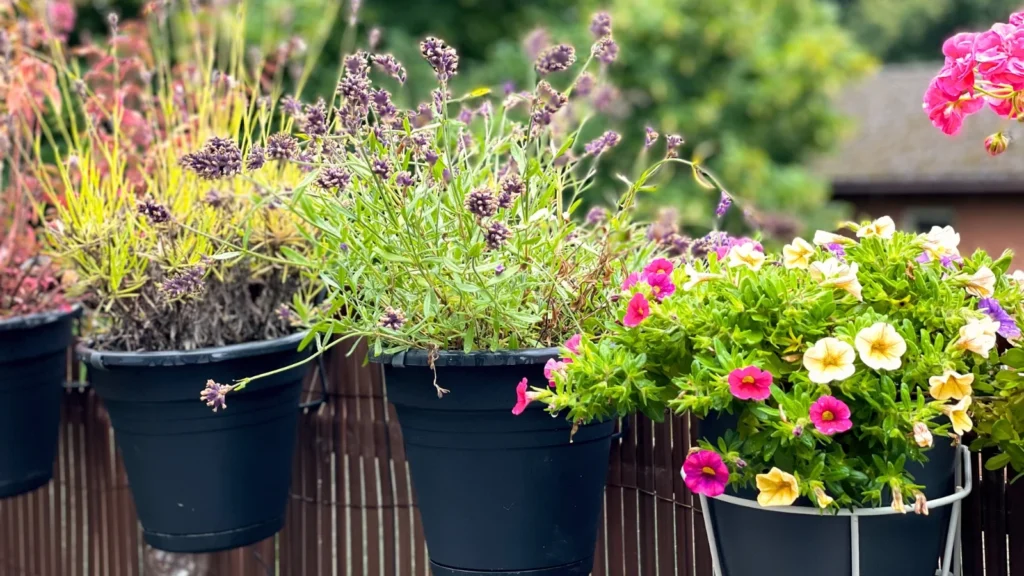
Focus on crops that are compact, high-yielding, and suitable for container growth:
A. Leafy Greens
- Spinach, lettuce, kale, and Swiss chard grow quickly and can be harvested multiple times.
- Ideal for small containers and partial sunlight.
B. Herbs
- Basil, mint, coriander, parsley, and thyme thrive in small pots.
- Provide fresh flavors for cooking while occupying minimal space.
C. Fruiting Vegetables
- Tomatoes, peppers, chili, and dwarf eggplants are excellent container crops.
- Use trellises or cages to support upright growth.
D. Root Vegetables
- Carrots, radishes, and beets grow well in deep, narrow containers.
- Choose compact varieties for smaller pots.
E. Strawberries and Small Fruits
- Strawberries, dwarf blueberries, or even small citrus trees (like calamondin) can be grown in medium to large pots.
Selecting crops that suit your balcony conditions ensures continuous harvest and optimal yields.
4. Soil Preparation and Fertilization
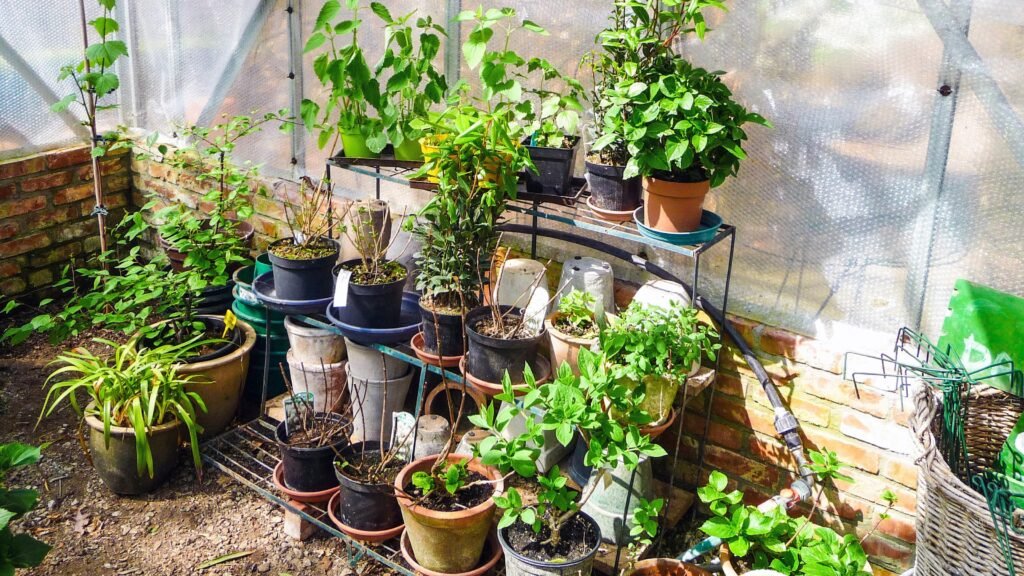
Healthy soil is critical for balcony gardens:
- Potting Mix: Use well-draining, nutrient-rich potting mix, not garden soil, to prevent compaction.
- Organic Matter: Mix compost, coco coir, or well-rotted manure to improve fertility.
- Fertilization:
- Use liquid fertilizers every 2–3 weeks for fast-growing vegetables.
- Apply slow-release fertilizers for long-term nutrient supply.
- pH Level: Most vegetables prefer slightly acidic to neutral soil (pH 6–7).
Proper soil preparation ensures healthy plants and higher productivity.
5. Watering Techniques
Container plants dry out faster than ground-planted crops:
- Frequency: Water daily during hot months; reduce in cooler seasons.
- Method: Water at the base of plants to prevent leaf diseases.
- Self-Watering Containers: Consider self-watering pots or add a drip irrigation system to save time and maintain consistent moisture.
- Mulching: Use straw or wood chips to retain moisture and reduce evaporation.
Consistent watering is essential for vegetable growth and fruit development.
6. Maximizing Space Through Vertical Gardening
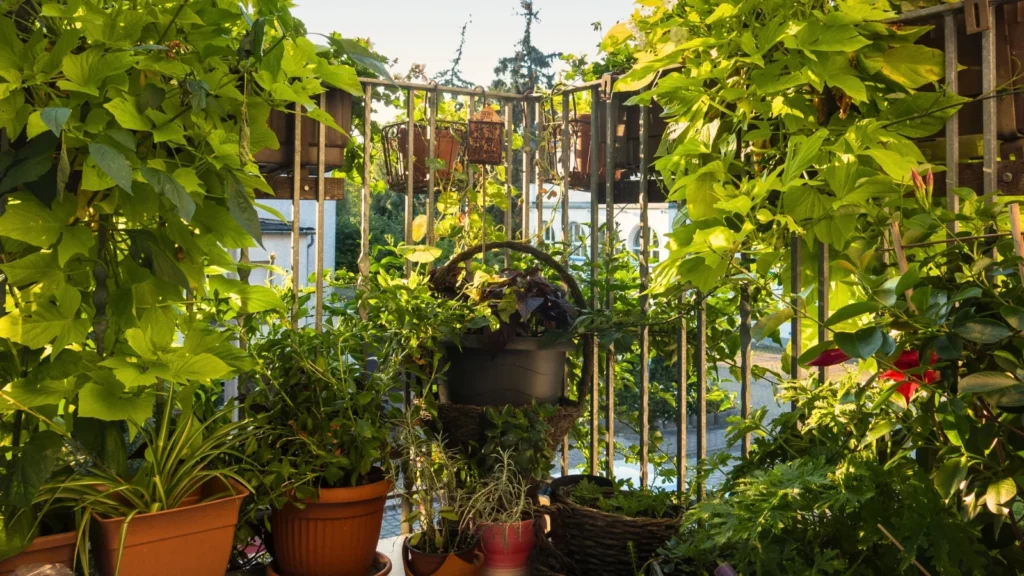
Balconies have limited floor space, so vertical gardening increases productivity:
- Trellises and Cages: Support climbing crops like tomatoes, peas, beans, and cucumbers.
- Hanging Baskets: Ideal for strawberries, herbs, or trailing flowers that can double as decoration.
- Wall Planters: Use wall-mounted pockets or vertical shelves for herbs and small vegetables.
- Tiered Containers: Layer plants by height to make use of vertical space.
Vertical gardening allows you to grow more food without occupying extra floor space.
7. Companion Planting
Companion planting improves yields, pest control, and soil health:
- Tomatoes + Basil: Enhances growth and repels pests.
- Carrots + Lettuce: Lettuce shades the soil and reduces water evaporation.
- Chili + Marigold: Marigolds repel insects and attract pollinators.
- Cucumbers + Nasturtium: Nasturtiums deter aphids naturally.
Strategic planting ensures higher productivity and fewer pest problems.
8. Pest and Disease Management
Balcony gardens are susceptible to common pests and fungal issues:
- Preventive Measures:
- Inspect plants regularly for aphids, spider mites, and whiteflies.
- Avoid overcrowding to improve airflow.
- Organic Control:
- Neem oil, insecticidal soap, or garlic sprays are effective.
- Introduce beneficial insects, such as ladybugs, for natural pest control.
- Disease Prevention:
- Remove diseased leaves promptly.
- Use well-draining soil to prevent root rot.
Maintaining plant health ensures consistent harvests and high-quality produce.
9. Seasonal Planning
For year-round food production, plan crops by season:
- Spring: Lettuce, spinach, radish, peas, and herbs.
- Summer: Tomatoes, peppers, eggplants, cucumbers, and basil.
- Autumn: Kale, broccoli, carrots, and spinach.
- Winter: Garlic, onions, winter herbs, and cold-tolerant greens.
Seasonal planning allows for continuous supply of fresh vegetables and herbs.
10. Harvesting Tips
Timely harvesting encourages continuous growth and higher yields:
- Leafy Greens: Pick outer leaves regularly to promote new growth.
- Fruiting Vegetables: Harvest tomatoes, peppers, and cucumbers when ripe to encourage further production.
- Herbs: Regularly pinch off leaves to keep plants bushy and productive.
- Root Vegetables: Harvest when roots reach edible size; avoid leaving them too long.
Consistent harvesting ensures fresh food for your family and encourages new growth.
11. Benefits of a Balcony Garden That Feeds Your Family
- Fresh and Healthy Food: Enjoy organic vegetables and herbs without chemicals.
- Cost Savings: Reduce grocery bills by growing your own produce.
- Space Utilization: Efficient use of limited urban space.
- Sustainability: Reduces carbon footprint by growing food locally.
- Therapeutic Effects: Gardening provides stress relief and physical activity.
- Educational Opportunities: Teach children about plant growth and nutrition.
Balcony gardens transform small urban spaces into productive and rewarding food sources.
12. Final Tips for Success
- Start small and expand gradually as you learn which crops thrive.
- Rotate crops to maintain soil fertility and reduce disease risk.
- Keep a garden journal to track watering, fertilization, and growth patterns.
- Use organic practices whenever possible for healthy, chemical-free produce.
- Incorporate a mix of fast-growing and long-term crops to maintain continuous harvest.
With careful planning, your balcony can become a mini-farm that feeds your family while enhancing your living space.
Conclusion
Creating a balcony garden that feeds your family is a practical and rewarding endeavor. By assessing your space, choosing the right containers, selecting high-yielding crops, and applying proper care, even a small balcony can produce fresh vegetables, fruits, and herbs year-round.
Key Takeaways:
- Evaluate sunlight, space, and weight capacity before planting.
- Choose containers with proper depth and drainage.
- Select crops suitable for small spaces and container growth.
- Use nutrient-rich soil and provide consistent watering.
- Maximize vertical space with trellises, shelves, and hanging baskets.
- Practice companion planting and monitor for pests.
- Plan crops seasonally to maintain year-round food production.
- Harvest regularly to encourage continuous growth.
With these strategies, your balcony garden can produce fresh, nutritious food for your family, while adding beauty and a sense of satisfaction to your home.
